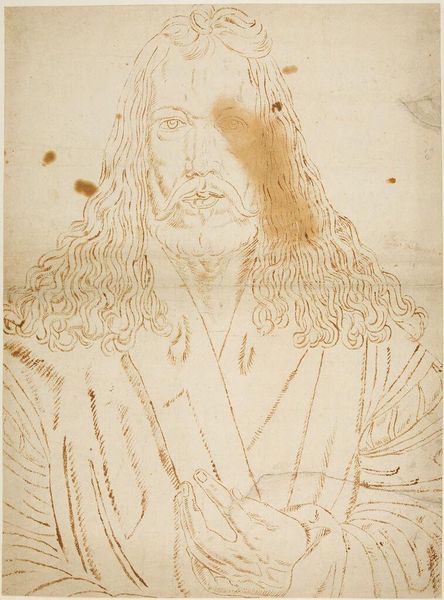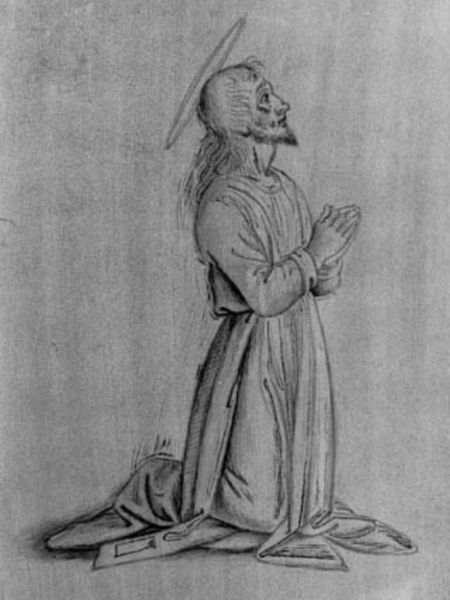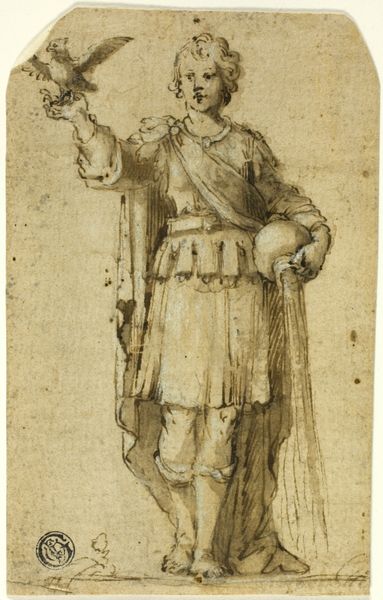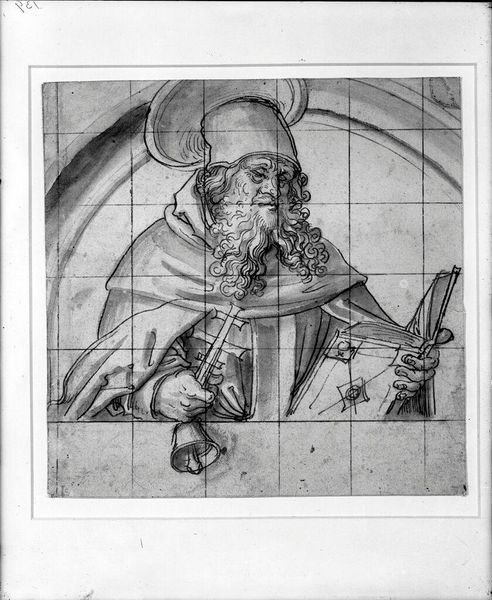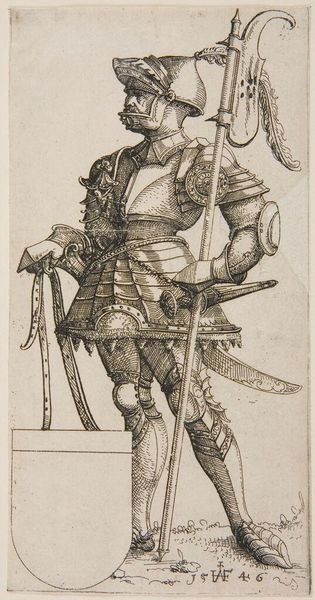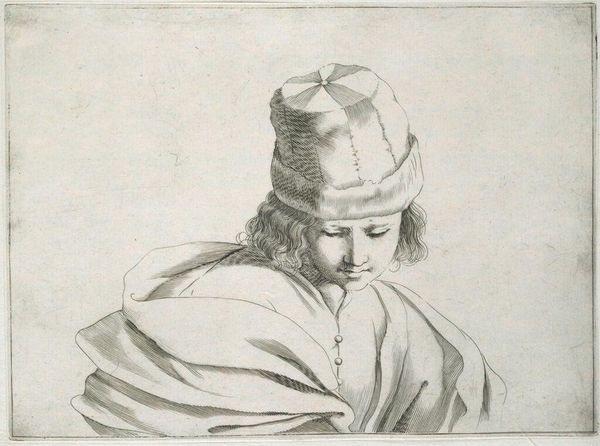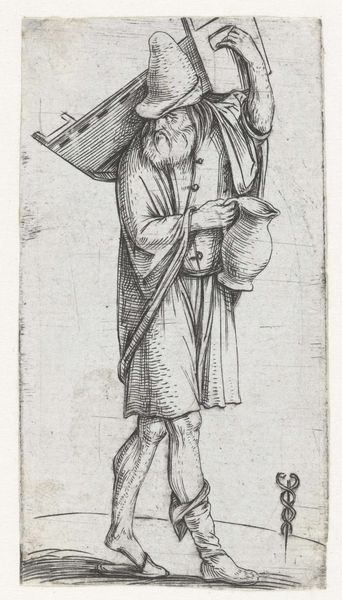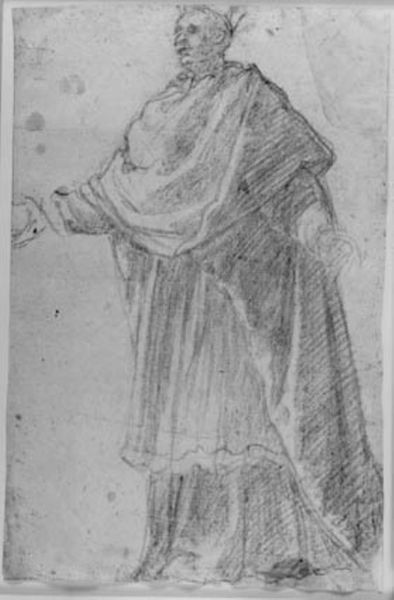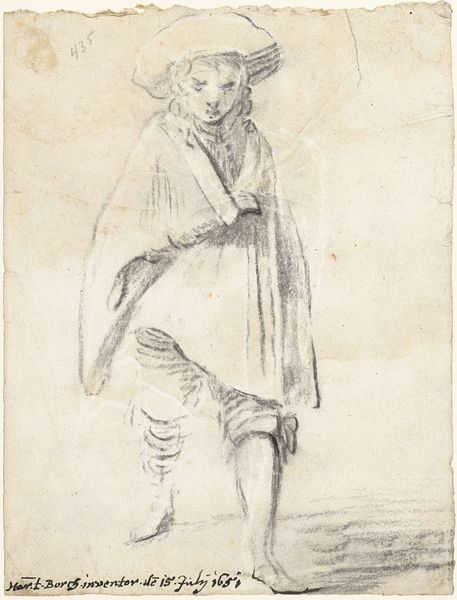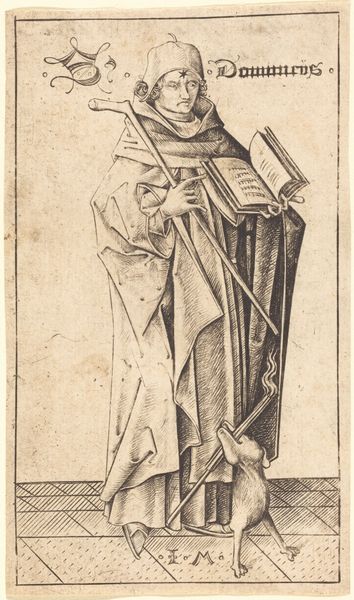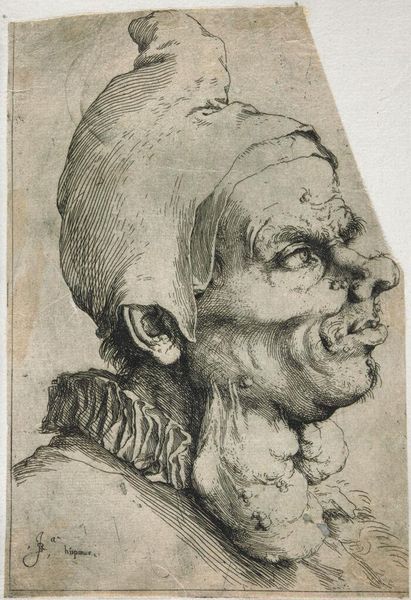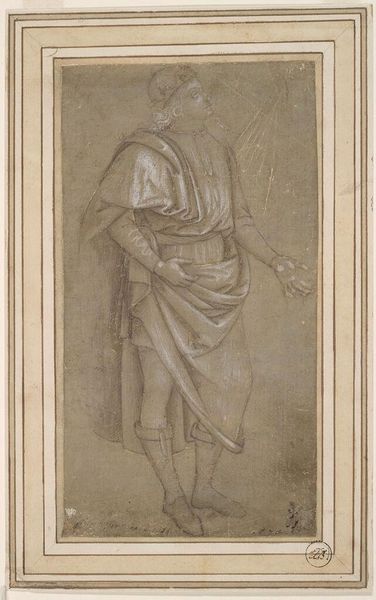
drawing, pencil
portrait
drawing
head
pencil sketch
charcoal drawing
figuration
form
pencil drawing
underpainting
sketch
pencil
line
portrait drawing
italian-renaissance
early-renaissance
Copyright: Public domain
Editor: Here we have Pisanello's "Study of a Head," created around 1436, made with pencil. The linear quality and attention to detail in the face and costume are really striking. What do you see in this piece? Curator: This drawing offers insight into the material practices of Early Renaissance workshops. Pisanello's choice of pencil, a relatively accessible material, signals a departure from the costly pigments and panel paintings we often associate with the era’s elite art. It speaks volumes about the accessibility, or rather, strategic deployment of certain materials for specific projects, such as preparatory studies. What does that hat signify? What social class would wear such an adornment? Editor: That's interesting! It feels almost like he's sketching out ideas more than creating a finished work. I hadn't thought about the economic implications of choosing pencil...The hat, armor and sword suggest the study of a noble or soldier... Curator: Exactly! Consider the labor involved – both Pisanello’s artistic skill and the sourcing and distribution of graphite at the time. This isn’t just a study of a head; it’s a record of material exchange, of value being created through artistic labor using available tools, connecting to specific sectors of the social fabric. Do you see the type of marks left on the paper, or pentimenti, as evidence of that? Editor: Definitely. Seeing the pentimenti really underscores that sense of process, the artist working through the idea, not just presenting a finished product. Curator: Precisely. And it moves our understanding of Renaissance art away from the purely aesthetic and closer to an understanding of artistic production within a material and economic framework. It makes one wonder, how are artistic sketches valued in today’s economy? Editor: That really makes me reconsider the relationship between materials, artistic intention, and the broader social context of the Renaissance. Thank you.
Comments
No comments
Be the first to comment and join the conversation on the ultimate creative platform.
